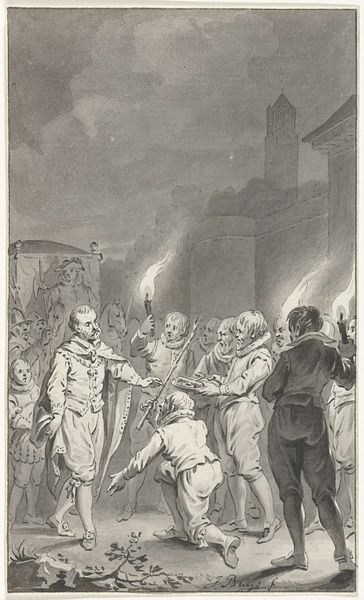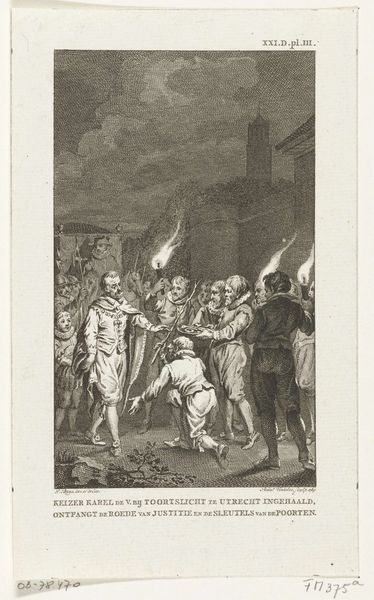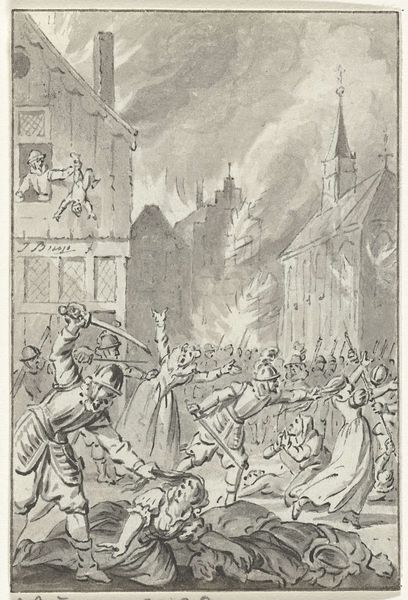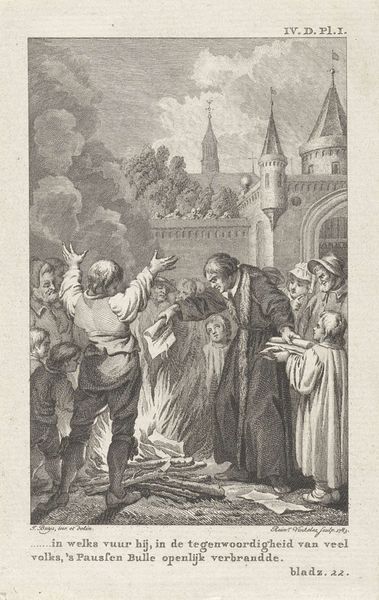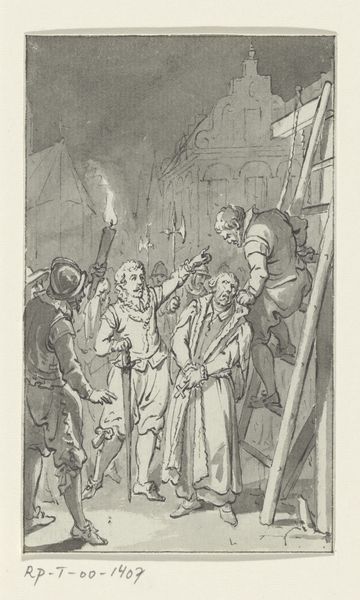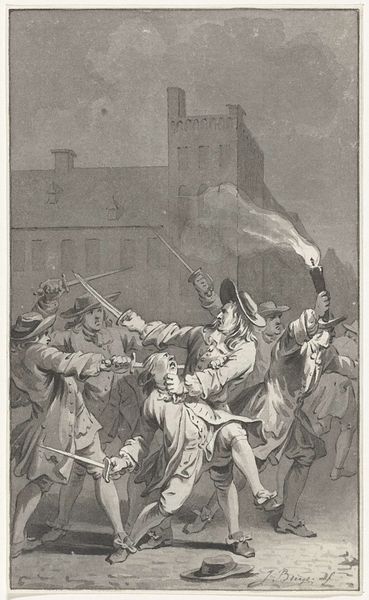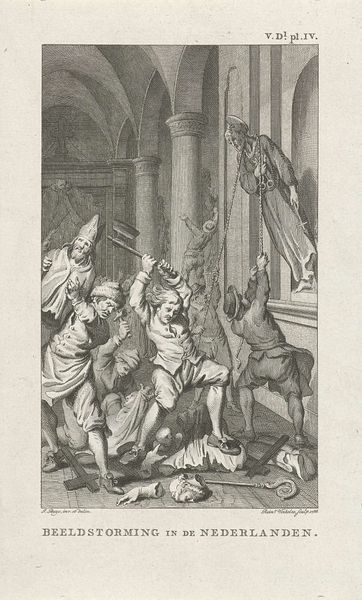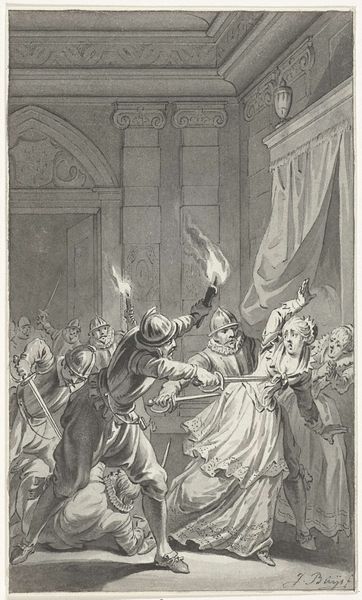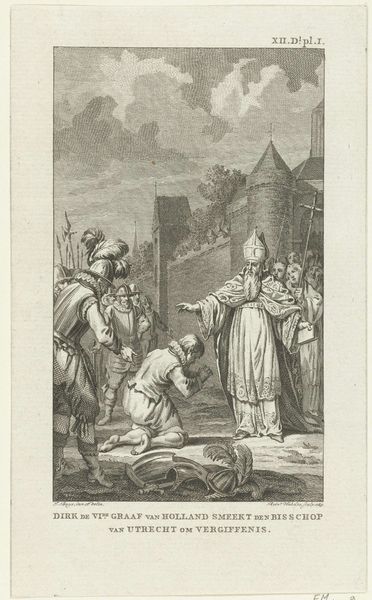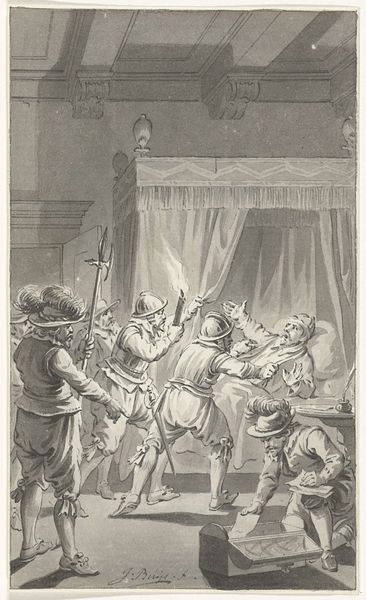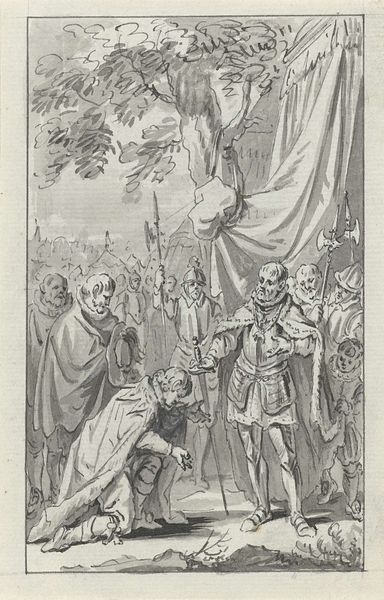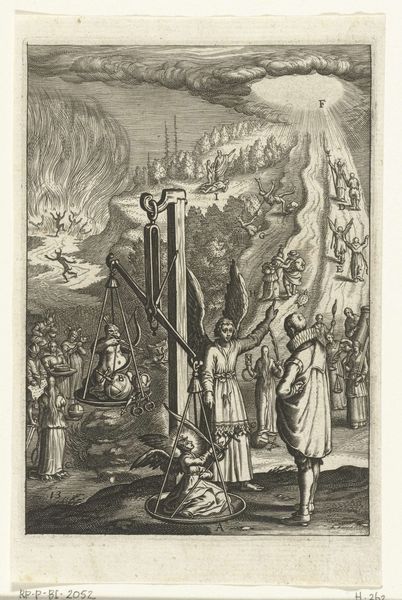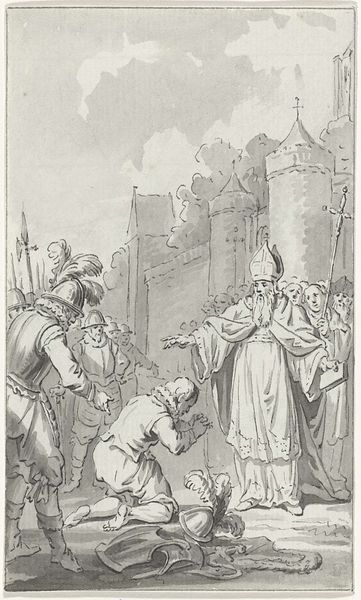
Karel V, Duits keizer, ontvangt de sleutels van de poorten en de roede van justitie van Utrecht 1787 - 1789
0:00
0:00
jacobusbuys
Rijksmuseum
drawing, paper, ink
#
portrait
#
drawing
#
narrative-art
#
paper
#
ink
#
genre-painting
#
history-painting
#
academic-art
#
realism
Dimensions: height 149 mm, width 90 mm
Copyright: Rijks Museum: Open Domain
Curator: This drawing by Jacobus Buys, made between 1787 and 1789, depicts Karel V, the Holy Roman Emperor, receiving the keys to the city gates and the "roede van justitie" or rod of justice, of Utrecht. It’s currently held at the Rijksmuseum. Editor: My first impression is of constrained power. The gray ink wash gives everything a subdued, almost nocturnal feel. And that’s… paper? Quite fragile. Curator: Absolutely. The monochromatic medium does create an air of somber reverence, even if the event itself was surely grand. Think of the symbolism inherent in the keys and the rod. The ritual is all about transfer of power. Editor: The social context here seems so critical. Utrecht’s submission is a performance. You can feel the weight of the moment resting not on inherent divine right, but on political negotiations and material advantage. Who ultimately benefited from this display of authority? Curator: Precisely! It's about maintaining societal order through a visible symbol of transferred power, resonating even today in legal and governmental proceedings. Power visualized and made tangible. Editor: I can’t help but notice the quality of the line work, especially on the figures. Were these preparatory drawings? How many iterations existed before this one, each made with precious inks and paper? Labor lies embedded within this performance. Curator: Possibly studies for a larger history painting; Buys was a master of academic art. Think about the cost, both in materials and time invested, to create such works at the time. Editor: And that’s also true about the procession; that procession, and everything in it would be costly, particularly in these historical conditions. The carriage seems rudimentary in the backdrop as though de-emphasized with lesser detail.. Interesting details regarding this artist! Curator: Exactly! It adds layers to our understanding of power, from political maneuvers to aesthetic construction. Editor: It certainly does. Analyzing both the iconographic language and materiality reveals multiple facets of power and its effects in late 18th-century Utrecht. Curator: An impressive show, on many levels. I’ll look at history a bit differently from now on!
Comments
No comments
Be the first to comment and join the conversation on the ultimate creative platform.
